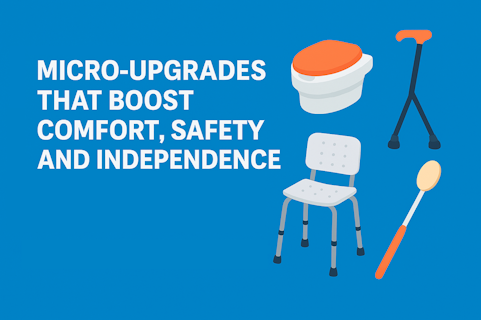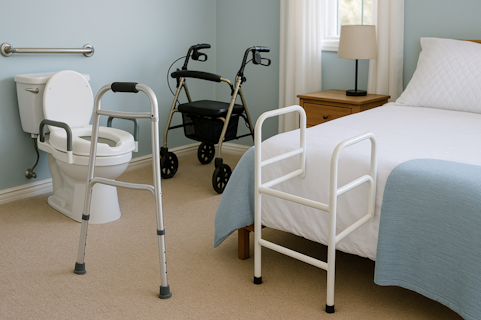
05 Dec 2025
For Help and Advice call: 01524 888453
Our blog06 Feb 2024
Crutches provide invaluable support and stability when balance is compromised due to disability, age, or due to an injury. Crutches are used by millions of people every day to help balance and give walking confidence.
Although it would seem obvious to many people how to use crutches, it is not until you have used them yourself that you find that they can actually be quite tricky to get the hang of, therefore any support and guidance can be valuable.
The NHS Inform website has some great videos that deal with this very topic, and video is a great way to show the methods and techniques to get the very best value and use out of your crutches.
The videos on this website show a number of different scenarios where crutches are used and how to get the best value out of your crutches when you are tackling obstacles such as stairs, or simply how to adjust your crutches to your own personal preferences.
What kind of crutches are there?
To use your crutches properly, it pays to know just which crutches you have and what the specific features and benefits they incorporate, so you can get the very best out of your equipment.
Crutches come in different configurations and colours, so there are closed cuff crutches, or open cuff crutches, but what’s the difference?
The term ‘open cuff’ refers to the part of the crutch that is in contact with the lower arm, in these models of crutch, the cuff is open, as you can see on the photograph.
The open cuff allows the arm to enter the crutch easily and therefore offers faster crutch utilisation with as little fuss as possible to the user.
When the crutches are no longer needed, the forearm can be easily removed from the cuff through the open arrangement of the cuff, so making for easy patient transfer in comfort and safety.
The model shown here is from the very popular FlexyFoot range, with a unique flexible tip for use across multiple surfaces and terrains.
Closed cuff crutches, as shown in the image, have the more generous coverage of the forearm when in use, so providing extra support as a walking aid for either short term injury, or longer term use and rehabilitation.
The closed cuff gives that extra layer of security and balance and enures that the crutch does not slip off the forearm if the user should lose balance or be transferring weight.
In terms of performance, there isn’t much difference between the two types, as both can offer exceptional support to the user across many usage scenarios.
If you are using crutches in between travelling in cars, buses or aeroplanes, or if you simply need a more compact model of crutch, then folding crutches can be a good choice.
In terms of how they work, there is not much difference in the performance or level of weight bearing that they will take, it is simply the case that folding crutches can offer the convenience of portability and lightness, so that they can be an invaluable travel aid.
Folding crutches can be easily adjusted and usually clip securely in position where they can safely take the weight of the whole body with ease.
After use, your folding crutches can be easily be folded in very few steps, usually by releasing a catch or pressing a button on the crutch neck which allows for the crutch to fold into a compact package.
Again, the folding crutch model featured is from FlexyFoot, these premium carbon fibre folding crutches are extremely lightweight and deceptively strong and reliable.
To get more detailed information on how to use your crutches properly, visit the NHS Inform website where you will find good information on exactly how to use and get the most from your crutches.
05 Dec 2025
27 Nov 2025
11 Nov 2025

